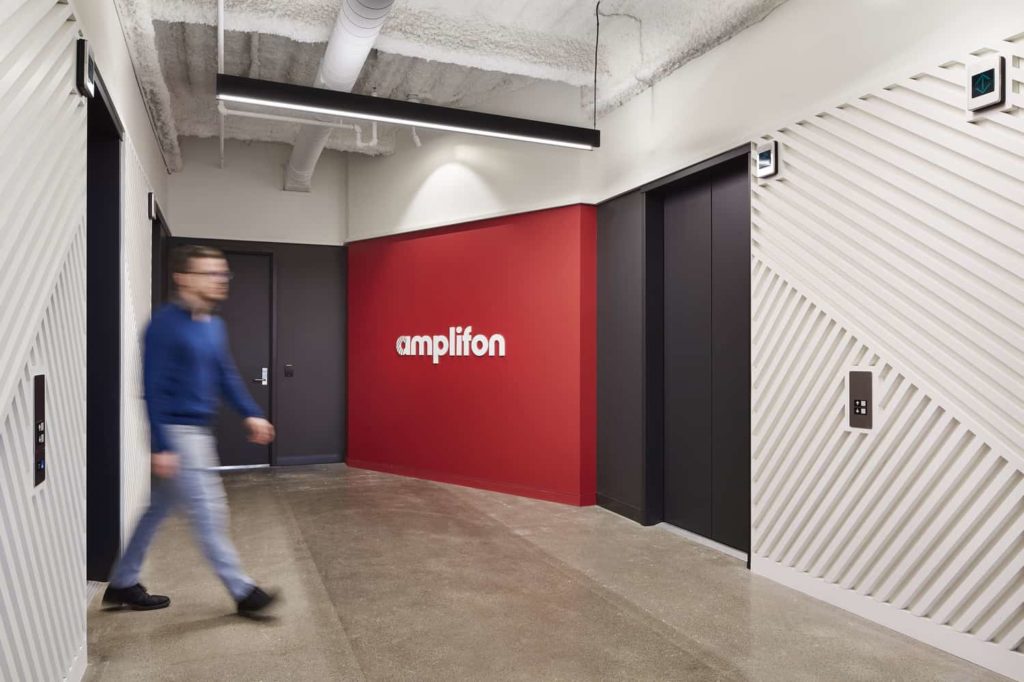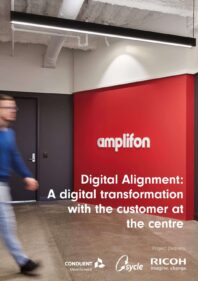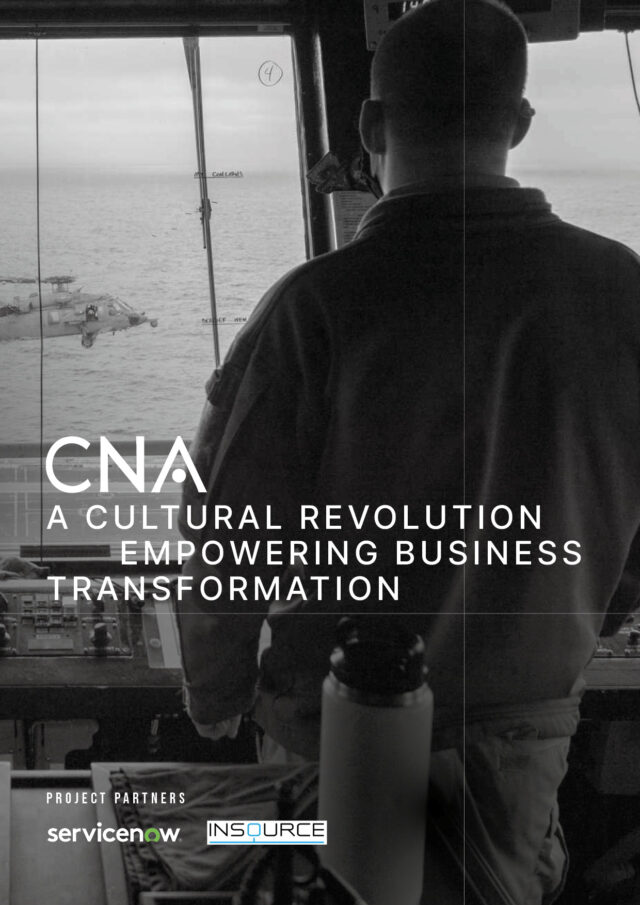The role of the CIO and the significance of an IT function has changed dramatically. Given the rise of digital solutions, digital transformations and the digitalisation of business, this comes as no surprise. No matter the industry, no matter the market specialization, the challenge for any business remains the same – serving the customer. The customers of today, and the customers of tomorrow, demand seamless experiences and digitally enabled interaction with their service providers. These demands are constantly shifting and so businesses over the world continue to radically shift their internal IT infrastructures to enable a level of agility and resilience that fosters innovation and allows them to continue to better meet the needs of this evolving customer base.
“The world around you is constantly evolving thanks to new technologies and new market challenges; your customers are changing too,” says Alessandro Crisci, Senior VP of IT for Amplifon Americas. “There is a major generational change happening and so whatever you were prepared to face five years ago has changed quite a bit.

“Every company has to continually adapt to be relevant in the market and to be relevant to the customer, whoever they are.”
Amplifon is the leading global provider of solutions and services in the hearing care space. With more than 10 million customers worldwide, Amplifon provides a number of services ranging from comprehensive hearing tests, consultation on hearing aid solutions, fitting of hearing devices, and hearing care assistance. With more than 10,000-point of sales (POS), and 17,000 people across all five continents, the challenge of meeting the changing customer base is amplified significantly.
Crisci is the SVP of IT for Amplifon Americas, which is made up of four key brands; Amplifon Canada (business to consumer retailer), Miracle-Ear (the largest brand made up of franchisee and corporate-operated clinics), Elite Hearing Network (offering services to independent clinics and stores) and Amplifon Hearing Health Care (managed care space serving members of insurances, employers or associations that are providing hearing aid benefits to their members).
Through his role, he serves all four of the brands with a shared and unified IT team. “I am here to drive the digital transformation of Amplifon in the Americas Region,” he says. “It’s important to recognize that this is not just an IT journey, it’s a joint journey. We are transforming the company in the way we operate, and we are doing it in conjunction with all of the business.”
This transformation aligns to a broader global journey of Amplifon called One Amplifon Transformation, which will see the company truly align and leverage all of its global assets, solutions and ‘know-how’ while still remaining relevant to its local markets.
The term ‘digital transformation’ is incredibly overexposed and, with it, comes a key challenge in trying to define what it even means for a company. Each company has its own focus, priorities and approach to a digital transformation, and Crisci is keen to highlight the one true commonality in any journey. “It has to be relevant and start from the customer,” he says. “At the end, we transform to better serve our customers. A transformation done just for the sake of adopting technology does not make sense.

“We look at all the aspects of the customer journey and customer experience and we define a roadmap based on what is relevant for them. Then we have regular alignment discussions with all business unit leaders, and corporate and global colleagues, and we execute against them. That’s the basis for this transformation.”
Placing the customer at the very centre of the transformation sounds simple enough on paper, but to maintain this approach requires a constant dialogue with the customer and keeping a close eye on the market. This allows the business to ensure that any decision it makes is made with the customer’s needs and expectations in mind.
“As a company, of course we observe the market. We observe the trends, and we make our own studies,” he says. “One thing that we’ve found particularly interesting about our customer base is that normally they are around 60-65+ years old. We found that even if you think they are unfamiliar with digital channels, that’s not actually true; a good portion of them is very active on the digital channels.”
This has forced Amplifon Americas to think a little more about its own digital channels and recognize and identify a number of key ways in which it can improve and better serve this customer base. Crisci is keen to highlight that as Amplifon has such a huge global network, some of which are further along this digital maturity curve than others, he can tap into and leverage best practices and successes from them. This proves essential when establishing businesses cases for digital solutions, as opposed to simply following the digital trends in the markets.
“You need to be aware of technology and to study both your market and the other businesses to see what is available, especially when the investments are large and they change how your business operates,” says Crisci.
“It’s very important that you have solid business case study. There are some things you can try and pilot; a quick solution that you can put there and see if it works. When we invest in technology, we have to start by asking how we can better serve our customers. We try to look end-to-end and at the customer journey; what they will experience? How can we provide a better experience? Or better products, solutions and a better service? We then try to define the technology piece.”

Amplifon Americas’ digital journey looks closely at three different areas: digital interaction, the evolution of hearing aid products and the transformation of systems and technology to enable its people to serve the customer better. As Crisci noted above, the majority of the customer base sits in the 60-65+ age range but market evaluation recognized that both this group and the younger 55-60 age group are digitally active, and so digital interaction becomes a key priority.
The company has invested in overhauling its websites and the experience, capabilities and the functionalities behind them as well as launching a branded mobile app. “We also looked at the digital interaction not just with our end customer, but with our partners,” says Crisci. “Here we launched new portals to be able to interact digitally with our providers. With customers, we now have a scenario where they can go on our website or app, find a store close to them, book an appointment, and schedule a consultation online.”
As a market leader in hearing care services and solutions, Amplifon does not actually manufacture hearing aids. It works with partners to make hearing aids available on the market and provide new solutions to the customer, which are more advanced and more connected. Falling under Amplifon America’s largest brand, Miracle-Ear, the company launched an initiative called the Miracle-Ear Product Experience. This is a comprehensive proposition for its customer, which encompasses both the technology solution (hearing aids) and services like hearing care and support. “This proposition is fully connected,” explains Crisci. “Your hearing aid is connected through your mobile app and can be connected through other devices in the house. You have a fully integrated journey, and you can also provide care to the customer. Remote care is a growing trend, so this is becoming more relevant to Amplifon.”
For Crisci, the third area is very important, and for him it’s a case of enabling Amplifon’s people to serve the customer better, irrespective of the customer channel. “Audiologists and hearing care professionals are at the centre of our customer experience, and they need to be enabled with tools and capabilities to provide an excellent experience,” he says. He envisions a situation where a customer enters a store and the shop or clinic personnel know who that person is and knows in advance what issues they might have if they use a hearing aid.
To achieve this, Amplifon focuses on the digitalization of enterprise processes and customization of the experience: “The more you streamline your enterprise processes, the more precise, timely, and reliable you are in serving” he says. “As per providing a personalized experience, this means you look at an increasing number of data and truly know your customer, because if you know your customer, then you can provide better services because you understand their challenges.”
Evidence of this can be seen in how Amplifon Americas has worked to improve its capability as a third-party administrator in the managed care space. These improvements allow the company to seamlessly integrate with large payers like insurers and employers to be able to better serve their members, be more responsive and streamlined and have immediate access to the right information. This can include what benefits they have or what process and even what insurance claim they might have. Amplifon Americas can now do this much more effectively in an integrated and automated way.
Elsewhere, Amplifon Americas has also launched its One Big Data program, which allows the company to have a comprehensive view of its customers, including visits to any of its clinics as well as what their purchases are. On top of that, thanks to the integration with the mobile app, the company can understand if they are using their hearing aid effectively and can assist them in optimising their distinctive experience. “Ultimately, the aim of this is to have a better understanding of what the customer needs in order to serve them better,” adds Crisci. “We can use this to offer the best solution to fit their needs and provide them with counselling and care throughout the journey so that they make the best use of it.”

One can be forgiven for thinking a journey like this is a simple and pain free experience, thanks in part to the great successes achieved so far. But, as we all know, technology breeds great opportunity and great challenge and no company is immune to these challenges. For many, a key challenge is buy-in. After all, a transformation brings change and some may not feel the need for change. “Any successful transformation is successful only to the extent that it’s fully embraced by the team,” he says. “I think it’s mandatory, and a pillar of your transformation should be to continually promote and explain the journey, and to have ambassadors promoting the idea and the change through the organization.”
“There’s also the need to integrate your transformation journey with the running of your daily operation,” he adds. “You have to serve your customers on a daily basis, all while running a transformation. I don’t think there is a secret sauce here to face this, but you have to carefully plan resources and not underestimate the importance of knowing which people you need to do what.”
With a digital transformation, there is no clear end in sight. Businesses find themselves in a continuous evolution and Crisci is one of many who must continuously work and deliver results and prove that he is doing the right thing. Having experienced success helps the conversation but you have to continuously work to engage and stimulate your team, and the entire organization. “Apart from the buy in of the business, a transformation is resource demanding and intense,” he says. “Seeing results and seeing the fact that they are appreciated helps build the morale of the team,” he says. “That’s an important aspect too, where I work a lot with my team in getting suggestions from them on which type of communication, interaction and discussion they want to have. That’s something we work a lot to be all aligned in this journey.”
Aligning and energising the people is something that Crisci and his team are incredibly proud of.
“The team that I have today has significantly evolved from the one I met almost two years ago when I joined,” he says. “There is a good part of the team which is still the same, but with a different energy and interest. There are people who are energized talking about new technology and a new role of IT in the company. They are passionate about learning and evolving.”
Vendors and partners
A transformation is something that simply cannot be achieved alone, and Amplifon Americas works closely with a number of partners on this journey. Some of them have been partners for a long time, and others brought in specifically for this journey. Crisci is keen to highlight a few that he describes as, “the backbone to providing services to our customers”.
A time of crisis
At the time of writing, the world has been gripped and devastated in many ways by the COVID19 pandemic. For business, this has been a time of uncertainty and opportunity and Crisci is quick to highlight that the strength of these partnerships (coupled with the work completed so far) has been key for Amplifon Americas to remain strong throughout.
“Think about the journey we are doing. We are transforming the way we run our operations. To us, it’s very important that the partners bring their experience and perspective. Have honest, constructive and open conversations,” he says. “It’s much easier to deal with partners, where you can talk straight, you can have an honest conversation, you can give feedback to each other, and we can improve together. I think that’s the type of partner that we of course look for, and those are the partners we try to work with.”
The next few years will see increased optimisation of the IT infrastructure and it will also see a degree of harmonisation, bringing the best practices from one brand into the others; aligning the people, and the businesses, together.
Crisci reflects on what has been key to success for him and what will remain key moving forward – is it the best technology? Or is it investing great deals of money? “It’s simple: listen to your customer,” he says adamantly. “I have a lot of internal customers who I work in partnership with and we have a lot of mutual trust. For a transformation it’s about managing the change, the priorities, the team and the organization
“If you openly discuss with everyone and manage it together and if you work in partnership and align on the priorities, then you are achieving success from the very start.”
Ricoh IT Services
“We have a complex, IT infrastructure, some of which is in the public and private cloud space. Ricoh supports us in managing our private cloud and the data center infrastructure. We started a journey with them to increase virtualization to our scalability. That’s very instrumental for us: for our ability to expand, to better serve our customers, to be able to operate at speed, and to be reliable.”
Sycle.net,
“They provide the solutions which we use in the clinics to handle patient care, so they are a critical part of our infrastructure. We want to provide an omnichannel journey for our customers. If you come from a digital channel, or you’re going to the shop, or you use our mobile app, the interaction you have with us is visible and is consistent across the channels. They are the master of our customer data and if you take an appointment from the web, it’s synchronized and it’s visible in the store, and our hearing care professional can serve the customer better. They’ve been instrumental here.”









